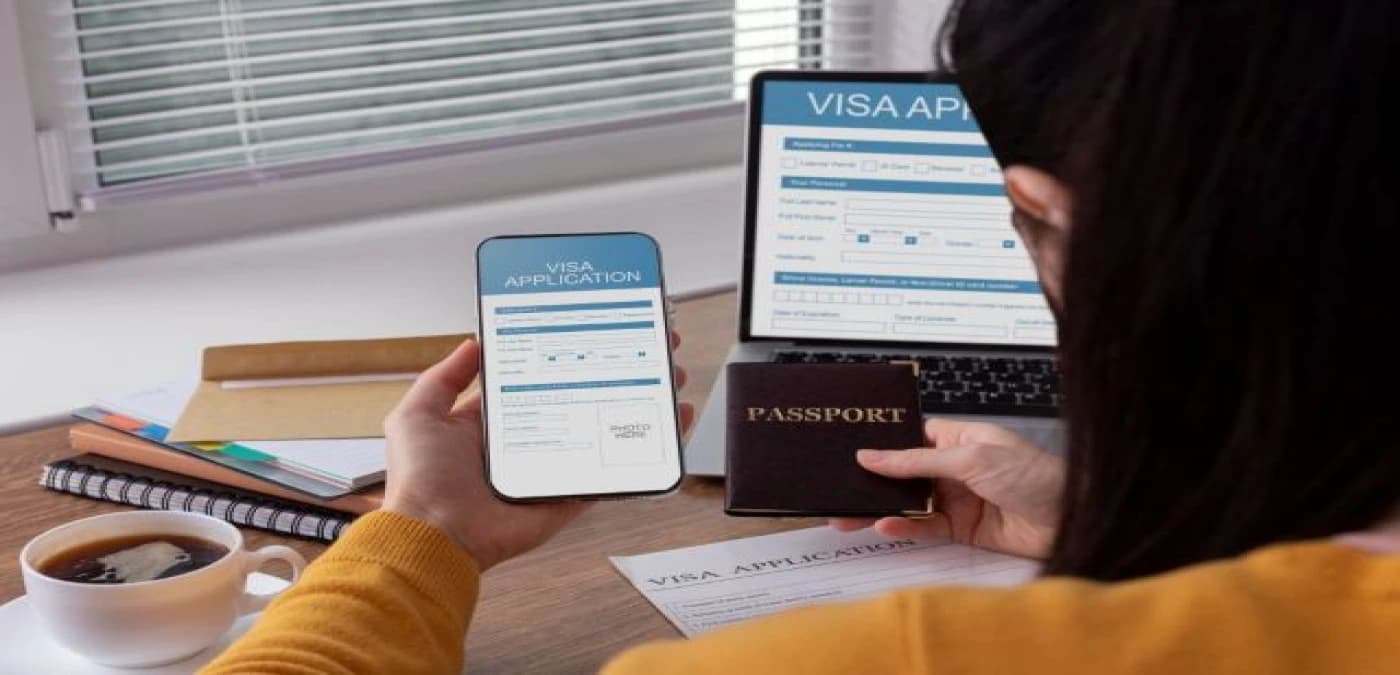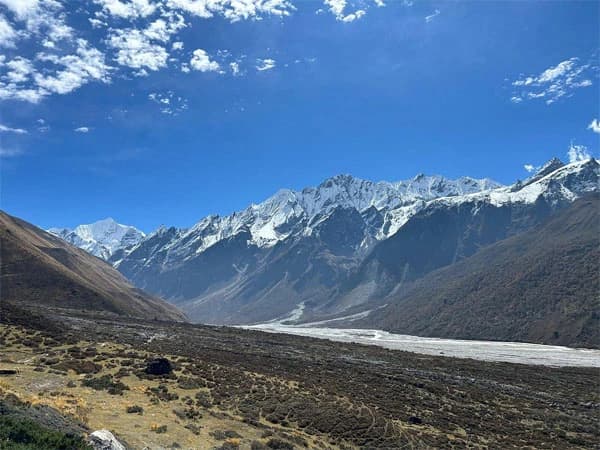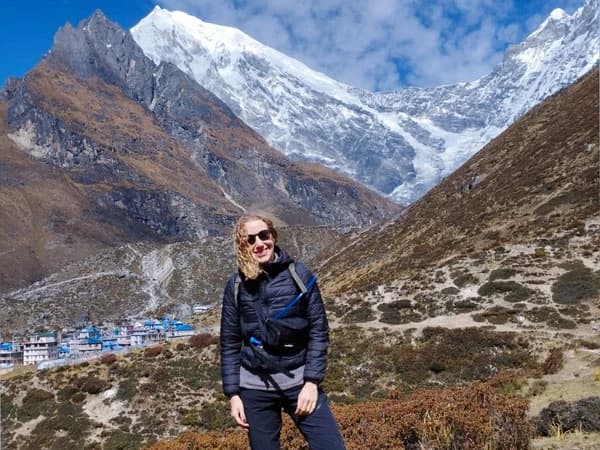Nepal, a small but stunning country tucked between two giants India and China is a land of incredible beauty and rich culture. Known as the gateway to the Himalayas, it is a home to eight of the world’s ten tallest mountains, including Mount Everest. But Nepal isn’t just about snow-capped peaks. It’s also a place of deep spirituality, centuries-old temples, vibrant festivals, and warm, welcoming people who make visitors feel right at home.
Whether you’re planning to trek through the Annapurna region, wander the ancient streets of Kathmandu, seek peace in the birthplace of Buddha, or simply enjoy the natural beauty and culture, Nepal offers a truly unique experience. It’s a favorite destination for adventurers, spiritual seekers, photographers, and cultural explorers alike.
However, like any international trip, visiting Nepal requires some preparation. Knowing what to expect can help you avoid stress and make your trip smoother and more enjoyable. From understanding visa rules and vaccinations to learning about the weather, local customs, safety tips, and responsible trekking practices, it’s all worth knowing ahead of time.
In this comprehensive travel blog, we’ll cover everything you need to know before visiting Nepal. Whether it’s your first time or you’ve been before, these tips will help you make the most of your journey and experience in Nepal to the fullest.
Everything You Need to Know Before Visiting
Visa Requirements for Nepal
If you’re heading to Nepal, one of the first things you’ll want to sort out is your visa. Luckily, Nepal makes it really easy for most travelers. You can get a visa on arrival, which means no embassy visits or stressful pre-trip paperwork for most people. When you arrive at Tribhuvan International Airport in Kathmandu or cross at certain land borders you’ll just fill out a quick form, pay a fee, and get your visa stamped in your passport. It’s that simple.
There are three tourist visa options, depending on how long you plan to stay:
- 15 days – $30 USD
- 30 days – $50 USD
- 90 days – $125 USD
Not sure how long you’ll be there? It’s totally fine to go with the shorter option, you can always extend your visa later if you decide to stick around (which a lot of people end up doing).
Two ways to get it
1. On arrival: This is what most people do. You land, go to the visa desk, fill out a form on a machine or by hand, pay in cash, and you are in. The only downside is that there might be a line, especially during peak season. But overall, it’s a pretty smooth process.
2. Online beforehand: If you want to save a bit of time, you can fill out the visa form online before you go at Nepal’s official immigration site. Just make sure you do it within 15 days before your arrival, and print out the confirmation to show when you land.
What you’ll need:
- A passport that’s valid for at least 6 months
- At least one passport-size photo (even if they don’t ask for it, it’s smart to have)
- US dollars in cash to pay the visa fee (don’t count on cards working there)
- Your printed online visa receipt, if you applied early
A couple of things to keep in mind
- If you’re coming in overland, from India be sure to double-check that the border you’re using. As not all of them offers visa on arrival services.
- Visa extensions are easy to get if you change your mind and want to stay longer. You can do that in Kathmandu or Pokhara.
- Don’t let your visa expire. Overstaying even by a day means paying a fine, and it’s just not worth the stress.
Best Time to Visit Nepal
Nepal’s weather swings from warm blooms to icy peaks over the year, and each season has its own magic. Here’s a closer, more detailed look so you can pick the months that suit your style from flower-filled hikes to crowd-free temple visits.
Spring (March to May)
Spring in Nepal feels like the world waking up. Daytime temperatures in the Kathmandu Valley hover between 15 °C and 25 °C, with cool mornings that quickly warms under the sun. In the middle hills around Pokhara and the Annapurna region, rhododendron forests burst into red, pink and white blossoms, your camera will love these colors against the snow-capped backdrop.
- Festivals & Culture: Holi (the festival of colors) usually falls in late March, when streets and hillsides become a riot of powdered paint and laughter. Mid-April brings Nepali New Year, with parades, music and family gatherings.
- Trekking: Trails dry out after winter, and visibility is excellent. Popular routes like Annapurna Base Camp or the lower Everest trails are in full swing but not yet overcrowded.
Tips: Book your teahouse rooms or tented camps a couple of months ahead if you’re traveling during Easter or local holidays. Carry a light fleece for chilly dawns above 3,000 m.
Summer / Monsoon (June to August)
Monsoon rains sweep in from India, drenching most of Nepal in afternoon downpours. In cities and low valleys, you’ll find the air lush and green, but mountain passes can get slippery, and occasional landslides make high-altitude trekking risky.
- Weather: Expect daily thunderstorms, especially between noon and early evening. Humidity is high so, your rain jacket will get plenty of use.
- Offbeat Adventures: The rain shadow areas of Upper Mustang and Dolpo stay relatively dry. It is ideal if you still want a Himalayan trek. Chitwon and Bardia National Parks are great for wildlife safaris under emerald canopies.
Tips: If you travel now, pack waterproof bags for your gear. Watch out for leeches on jungle trails, gaiters and salt packets help keep them at bay. Lower-elevation hikes like the Kathmandu Valley circumference are still doable.
Autumn (September to November)
Autumn is the jewel in Nepal’s tourism crown. The monsoon washes away dust, leaving skies crystal-clear and mountain vistas razor-sharp. Temperatures settle into a comfortable 10–20 °C range in the hills.
- Festivals & Culture: Dashain (late September–early October) is the longest and most important festival, with family feasts and traditional blessings. Tihar (October–November) lights up homes with oil lamps, and in Kathmandu, Indra Jatra brings masked dances and chariot processions.
- Trekking: This is peak season for routes up to Everest Base Camp, the Annapurna Circuit and lesser-known trails. Services are fully operational, but trails and teahouses fill up fast.
Tips: Book flights to Lukla or Pokhara early (six months ahead if you can). Carry sunglasses and sunscreen—UV levels are higher at altitude than you might think.
Winter (December to February)
Winter in Nepal is crisp and quiet. Days in Kathmandu can reach 12–15 °C, but nights dip below freezing, especially above 2,500 m. Many high-altitude passes close under snow, yet lower treks and cultural tours shine in the clear, cool air.
- Weather: Frosty mornings and sunshine by midday. In the mountains above 4,000 m you’ll find deep snow, ideal for snowshoeing but tricky for standard trekking.
- Alternative Routes: Shorter treks like Ghorepani (Poon Hill) or Helambu stay open and give you stellar views without heavy snowfall. Lumbini, the Buddha’s birthplace, is mild and serene at this time.
Tips: Layers are your best friend. Down jackets, thermal underwear and sturdy waterproof boots will keep you comfortable. Hotels and flights often have off-season rates, so you can snag a deal.
Choosing Season
- Go for spring if you want colorful trails and moderate crowds.
- Opt for monsoon only if you crave lush jungles or dry trekking in rain-shadow regions.
- Book autumn for faultless weather, festivals and peak-season buzz.
- Try winter if you prefer solitude, lower-elevation hikes and bargain prices.
No matter when you visit, Nepal’s mix of towering peaks, welcoming villages and timeless culture guarantees an unforgettable trip.
Currency and Budgeting
Nepal runs almost entirely on the Nepalese Rupee (NPR). Even if you spot prices tagged in U.S. dollars at some trekking agencies or upscale hotels, your day-to-day spending from that steaming plate of dal bhat to a jeep ride up to a trailhead will be in rupees. Here’s how to keep your wallet and your trip running smoothly:
Carrying and Safeguarding Cash
- Split your stash. Divide your cash into three spots i.e. one bit tucked in a daypack, another in a hidden pocket of your travel belt, and a small emergency fund in your main bag. If one pouch goes missing, you won’t be stranded.
- Small bills are golden. Break larger NPR 1,000 or 500 notes at a bank into ₹100 and ₹50 bills. Local tea stalls, village shops and even some guesthouses may not have change for big notes.
ATMs, Banks & Exchange Booths
- ATMs in the cities: Major banks (like Nabil, Everest, or Himalayan Bank) is in Thamel Kathmandu, Lakeside in Pokhara and town centers across the country
- Exchange counters: The rows of “best rate” kiosks in Thamel and Pokhara often beat airport counters by a few rupees per dollar. Watch out for hidden commissions—ask for the net rate after fees, and count your rupees before you leave. Banks offer transparent rates but may charge a fixed commission per transaction.
Note: Machines can run dry during festivals (Dashain, Tihar) or long holidays—always grab cash when you first spot a working ATM.
Card Acceptance & Digital Payments
- Where plastic works: Upscale hotels, trekking outfitters, and a handful of cafés in the main tourist hubs accept Visa/MasterCard—but usually tack on a 2–4% surcharge. Don’t count on cards beyond Kathmandu or Pokhara.
- Local e-wallets: Nepali love apps like eSewa or Khalti for domestic transfers and bill payments but you’ll need a local SIM and bank account to use them. Handy to know, but not much use for most visitors.
Daily Budget Breakdown
- Shoestring (USD 25–40/day): Dorm beds or basic rooms (NRP300–600/night), local meals like dal bhat (NRP200–300), shared jeeps or local buses (NRP100–500 per ride), and free-entry temples or low-fee treks.
- Comfortable (USD 60–100/day): Private rooms with hot showers (NRP1,200–2,500), mix of Nepali and Western dishes (NRP400–800 per meal), private taxi or jeep legs (NRP2,000–4,000/day), plus occasional guided day hikes (NRP2,000–3,000).
- Splurge (USD 150+/day): Boutique lodges with Wi-Fi and heating (NRP5,000+), domestic flights (Kathmandu–Lukla NRP15,000 one way), full trekking packages with guide + porter (NRP5,000–7,000/day), plus little luxuries like spa treatments or helicopter scenic flights.
Don’t Forget
- Trekking permits & park fees: Annapurna and Everest regions each charge roughly USD 30–50 for TIMS cards and national-park passes which must be paid in NPR at park offices.
- Tips & gratitude: If you hire a porter or cook, plan on about USD 5–10 per person per day for the porter and USD 15–20 per day for a guide, shared among your group.
- Emergency buffer: Keep an extra USD 50–100 tucked away for surprise gear repairs, extra tea-house snacks, or last-minute transport changes.
With a little planning and breaking big bills, knowing where ATMs work best, and budgeting realistically, you’ll spend less time worrying about money and more time soaking in the mountains, culture and hospitality that make Nepal unforgettable.
Health and Safety
Nepal is welcoming and, safe but a little preparation goes a long way toward keeping you healthy and worry-free, especially if you’re trekking or heading off the beaten path. Here’s a closer look at what to plan before you go, and how to look after yourself once you arrive.
1. Vaccinations & Pre-Trip Prep
- Core shots: Make sure you’re up to date on routine vaccines like Tetanus, Measles-Mumps-Rubella (MMR) and Diphtheria/Pertussis are standard in most countries.
- Travel vaccines: Book an appointment 4–6 weeks before departure to discuss Hepatitis A, Typhoid, and Rabies (the latter if you’ll spend time around animals or in remote villages). Your doctor may also recommend Hepatitis B or a Polio booster, depending on your medical history.
- COVID-19 & flu: Check the latest requirements for boosters or tests; crowded airports and trails can be breeding grounds for respiratory bugs.
2. Water & Food Safety
- Drink smart: Never drink straight from the tap. Use bottled water (seal checked), boiled water, or a trusted filter (e.g., a ceramic filter). Carry a few purification tablets or a small filter bottle on treks.
- Street eats: Freshly cooked food is usually safe and look for busy stalls with high turnover. Avoid raw salads unless you peel them yourself, and skip ice in drinks if you’re unsure of its source.
- Hand hygiene: Carry a small bottle of hand sanitizer or anti-bacterial wipes. Wash hands before meals and after trekking as it is the easiest way to avoid tummy upsets.
3. Trekking & Altitude Awareness
- Take it slow: Above 2,500 m, go at a gentle pace. Plan an extra rest day every 600–800 m of gain.
- Know the symptoms: Mild headaches, nausea or dizziness mean you should pause and hydrate. If you develop severe headache, confusion or breathlessness, descend immediately as these are red-flag signs of acute mountain sickness.
- Preventive pills: Talk to your doctor about Acetazolamide (Diamox). Taken before and during ascent, it can help your body acclimatize faster. Always carry it in your first-aid kit, alongside painkillers and anti-nausea tablets.
4. First Aid & Medications
Pack light, but smart: In addition to personal prescriptions, include:
- Pain relief: Ibuprofen or paracetamol
- Stomach remedies: Anti-diarrheal (e.g., loperamide) and rehydration salts
- Wound care: Sterile gauze, adhesive bandages, antiseptic wipes
- Blister kit: Moleskin or blister plasters
- Altitude tablet (if prescribed)
Local pharmacies: Kathmandu and Pokhara have well-stocked drugstores, but once you’re on the trail, you’re on your own. Don’t assume you can replace specialized meds in a remote tea-house.
5. Travel Insurance & Emergency Evacuation
- Essential coverage: Look for a plan that explicitly covers high-altitude trekking (up to at least 5,500 m) and helicopter evacuation. A rescue flight from Everest Base Camp can cost USD 5,000+ without insurance.
- Documentation: Keep a digital and paper copy of your policy, emergency numbers, and local embassy contacts in your daypack.
6. Local Safety & Common Sense
- Street smarts: Petty theft is rare but happens in crowded markets—keep valuables close and use a money belt or hidden pouch.
- Road travel: Nepali roads can be narrow and winding. If you’re prone to motion sickness, sit at the front of buses or jeeps, and carry motion-sickness pills.
- Natural risks: Monsoon season (June–August) brings landslide risk in mountain areas; check local weather and trail reports before setting off. Nepal sits on seismic fault lines, so familiarize yourself with basic earthquake safety (e.g., drop, cover, hold).
With these steps checked off your list, you’ll be free to focus on Nepal’s soaring peaks, vibrant festivals, and warm-hearted people. Be strong, healthy, and ready for adventure.
Tips to hassle free trek in Nepal
- Acclimatize properly in order to avoid Altitude sickness.
- Hire local licensed guide and porter.
- Hire registered trekking agency.
- Learn some basic Nepali Phrases in order to communicate with locals.
- Dress modestly while visiting cultural heritages.
- Avoid public display of affection.
- Never point your feet toward religious objects.
- Avoid walking alone at night in unfamiliar places.
- Do not disturb wildlife and nature conservation areas, avoid feeding stray animals.
Conclusion
Nepal is a destination that combines spiritual depth, breathtaking landscapes, amazing Himalayan views, and authentic cultural experience. It is the destination for the travelers all across the world with variations in interest. With a little preparation and cultural awareness, your trip can not only be memorable but also transformative. Whether you are hiking in Himalayas, exploring ancient temples, or immersing yourself in local life, Nepal offers you a journey like no other. Be sure to learn about the basic culture and system of Nepal in order to have a hassle free journey in the land of mountains and natural beauty.





